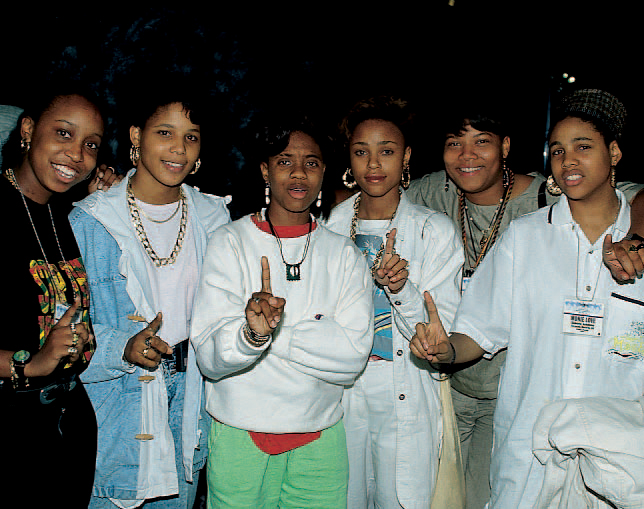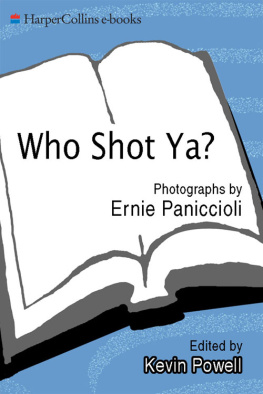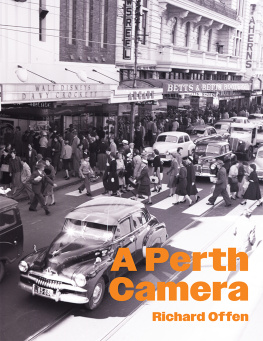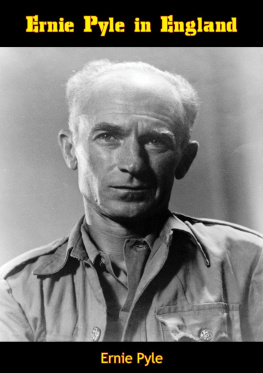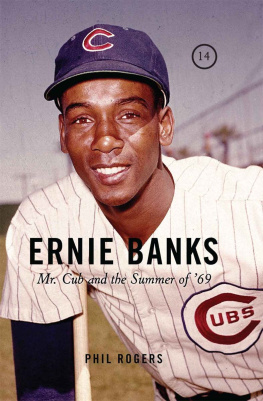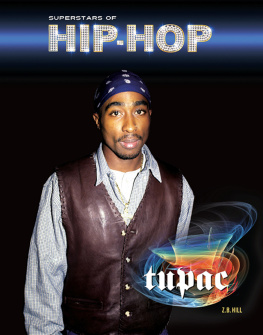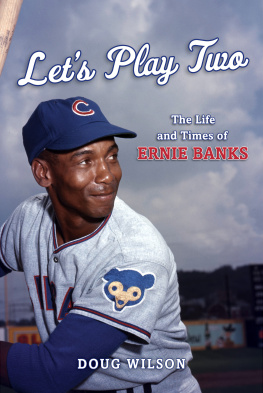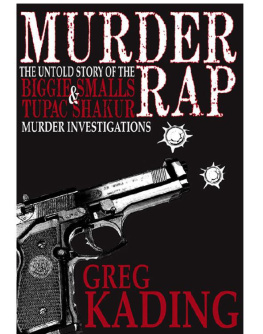This book is dedicated to my mother, Julia, who taught me strength, knowledge, wisdom, and understanding, a love for revolution, and to fight against ignorance, oppression, and hatred in all forms; my wife and daughter, who taught me patience; and my son, who gave me a grandson to pass on these lessons.
E.P.
For Harry Allen and Charlie Braxton: my big brothers and guides through the world of hiphop writing and thinking.
K.P.
And to the memories of Tupac Shakur, The Notorious B.I.G., Big Pun, Aaliyah, and Lisa Left Eye Lopes.
E.P. and K.P.
Thanks to all the women who nurtured me, loved me, taught me, and tolerated me. Thanks also to Richie Havens, Chuck D, Jamel Shabazz, Charlotte Sutton (the Apollo Theater), KRS-One, Doug E. Fresh (peacemaker), Afrika Bambaataa and Zulu, AIM (Free Leonard Peltier), NOI, Crazy Legs, Aaliyah, Big Pun (my good friend), LL Cool J, Flavor Flav, Jane Canonizado (who helped me raise my son clean and strong), Bro. William Dabney (a warrior), Grace Heck, Angela Thomas, Mary Moore, Duane Pyous, Manny Martinez, Chi Cheng, Miguel Baguer, Gwen Quinn, Scott Figman (publisher of Word Up! magazine, who made sure my family always had food on the table), Nancy E.Wolff, Kate, Gerrie and Maryanne (editors of Word Up! ), Naughty by Nature, Tim Dog, Public Enemy, Salt-N-Pepa (the hardest working women in rap, ever), Kid N Play, Roxanne Shante, Lauryn Hill (respect), and YoYo. Also to Ralph Mc Daniels, who was pumping hiphop videos long before BET or MTV or anyone else. And all of the publicists, magazines, and record labels that gave me work. My six brothers and my sister and my brothers and sisters in the struggle. Special thanks to Charles Harris, Dawn Davis, Carie Freimuth, and Kevin Powell for making my dream of doing a book a reality.
Ernie Paniccioli
Thanks to Charles Harris, Dawn Davis, Carie Freimuth, Sarah Wharton, Tara Brown, Rockelle Henderson, Kelli Bagley, John Jusino, Betty Lew, and everyone at HarperCollins for helping to make this book and Ernie s dream a reality. Thanks also to Jeff Posternak and the Wylie Agency, Davey D, Lauren Summers, Jocelyn Womack, Laylah Amatullah Barrayn, April Silver, Nikki Cynical Smith, Michael Jones, Bahia Ramos, and hiphop pioneers and hiphop heads everywhere. Thank-yous, too, to the Rock and Roll Hall of Fame and Museum and the Brooklyn Museum of Art for the very first hiphop exhibits on the planet in 1999 and 2000 respectively. It was through this historic showcase that Ernie and I first connected. And thank you to Ernie Paniccioli.
Kevin Powell
The torch has been passed to a new generation.
President John Fitzgerald Kennedy, inaugural address, January 20, 1961
My beloved let s get down to business / Mental self-defensive fitness.
Public Enemy, Fight the Power, 1989
Contents
T his thing, this energy, ghetto angels christened hiphop in the days of way back is the dominant cultural expression in America, and on the planet, today. You think not, then ask yourself why business interests as diverse as McDonalds, Ralph Lauren, Sprite, Nike, and the National Basketball Association have all, during the course of the past decade and a half, bear-hugged the language, the fashion, the attitude of hiphop to authenticate and sell their products. Or why, if you are a parent, your child, be you a resident of the Fifth Ward in Houston or an inhabitant of Beverly Hills, routinely strikes a hiphop pose and dons mad baggy clothes when leaving home for school on the daily, or when cruising a mall on the weekends. The rapper Ice-T said it best near the beginning of the 1990s: Hiphop is simply the latest form of a home invasion into the hearts and minds of young people, including a lot of White youth. Ice-T should be crowned a prophet for that proclamation. Sure, hiphop still rocks the boulevards but it is so much a part of American culturehell, it is American culture, with all the positives and negatives attached to that realitythat even the bourgeois reach for it and stake claims to it nowadays.
Therefore we can comfortably say that hiphop is bigger than ever. (If bigger is better is another essay altogether.) Just as we have witnessed the globalization of the economy, hiphop is global, making heads nod from Cleveland to Tokyo to Paris to Havana to Capetown, South Africa. Who knew that this thing, this energy, started on the streets, in the parks, of New York City, circa the late 1960s through. the decadence of the 1970s, by working-class African Americans, West Indians, and Latinos, would surpass jazz, rock n roll, and R&B in popularity and come to be the gritty, in-your-face soundtrack of a generation, of an era? From where did hiphop emerge? Think institutionalized White racism as the midwife for poor neighborhoods, poor school systems, poor health care, poor community resources, and poor life prospects. Think the United States governments slow but sure abandonment of its war on poverty programs (sending more money, instead, to that war in Vietnam. as the Civil Rights Movement came to a screeching halt. Think the material and spiritual failures of that Civil Rights Movement: the disappearing acts of leaders of color, the fragmentation of communities of color due to integration, lost industrial jobs and new migration patterns, and colored middle-class folk jetting from the hood for good. Think the New York City fiscal crisis of the early to mid-1970s, and the effects of that money crunch on impoverished residents of color in the Bronx, Harlem, and other parts of the metropolitan New York City area. Think of slashed art, music, dance, and other recreational programs in inner-city areas due to that fiscal crisishomies had to make due with what they had, for real. Add these factors together, multiply by, um, field hollers, work songs, the blues, Cab Calloway, zoot suiters, bebop, jitterbuggers, low-riders, doo-wop harmonizers, jump-rope rhymers, lyrical assassins like the Last Poets and Muhammad Ali, Nuyorican salsa and soul, Jamaican dub poetry, Afro-Southern sonic calls and responses in the form of James Brown, the wall carvings and murals of Africans, Latinos, Native Americans, and the drum, the conga, the pots and pans, being beat beat beaten here there everywhere and it all equals hiphop. Part of a continuum: magical, spiritual, a miracle sprung from the heavy bags and hand-me-down rags of those deferred dreams Langston Hughes had sung about years before.
Maybe it is no coincidence, then, that 1967 is not only the year that Langston Hughes, the great documentarian of ghetto life, died, but also the year that Clive Campbell, aka Kool Herc, came from Jamaica to New York City, to become widely regarded as a trailblazing DJ and one of the founding fathers of hiphop. Maybe it is no coincidence that the last political act Martin Luther King Jr. attemptedhis famed Poor Peoples Campaign, which essentially ended when he was murdered on April 4, 1968was aimed at the same subgroupand their childrenwho would ultimately drive hiphop culture. Maybe it is no coincidence that when Marvin Gaye asked the question on his landmark 1971 album Whats Going On Who really cares? and, later, pleads Save the children he was talking about, well, these forgotten children, the throwaways of post Civil Rights America, who would merely need courage, imagination, one mic, two turntables, spraypaint and magic markers, and cardboard or the linoleum from their mommas kitchen floors, to not only make a new art, but a cultural revolution fueled by four core elements, in no particular order: the DJ, the MC, the dance component, and the graffiti writing.
